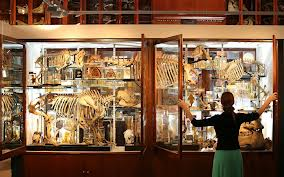 2 Willow Road
2 Willow Road Ben Uri Gallery - The London Jewish Museum of Art
Ben Uri Gallery - The London Jewish Museum of Art Charles Dickens Museum
Charles Dickens Museum Fenton House and Garden
Fenton House and Garden Fitzroy House - L.Ron Hubbard House
Fitzroy House - L.Ron Hubbard House Freud Museum
Freud Museum Golders Hill Park and Zoo
Golders Hill Park and Zoo Grant Museum of Zoology
Grant Museum of Zoology Hampstead Museum and Burgh House
Hampstead Museum and Burgh House Jewish Museum
Jewish Museum Keats House
Keats House Kenwood House
Kenwood House Lauderdale House
Lauderdale House London Film Museum - Covent Garden
London Film Museum - Covent Garden London Zoo
London Zoo Petrie Museum of Egyptian Archaeology
Petrie Museum of Egyptian Archaeology Pollock's Toy Museum
Pollock's Toy Museum Sir John Soane's Museum
Sir John Soane's Museum The British Museum
The British Museum The Building Centre
The Building Centre The Cartoon Museum
The Cartoon Museum The Foundling Museum
The Foundling Museum The London Waterbus Company
The London Waterbus Company  The Museum of Great Ormond Street Hospital for Children
The Museum of Great Ormond Street Hospital for Children The Sherlock Holmes Museum
The Sherlock Holmes Museum The Wallace Collection
The Wallace Collection Tours of Lord's
Tours of Lord's
The Grant Museum is the only remaining university zoological museum in London.
It houses around 62,000 specimens, covering the whole Animal Kingdom. Founded in 1827 as a teaching collection, the Museum is packed full of skeletons, mounted animals and specimens preserved in fluid. Many of the species are now endangered or extinct including the Tasmanian tiger or thylacine, the quagga, and the dodo.
Brief History on the Grant Museum of Zoology
The Grant Museum of Zoology and Comparative Anatomy is a natural history museum that is part of University College London in London, England. It was established by Robert Edmond Grant in 1828 as a teaching collection of zoological specimens and material for dissection. On his death Grant left his own collection to the museum. In 1875 Edwin Ray Lankester added to the museum collection. Later lecturer curators include W. F. R. Weldon (1860–1906), Edward Alfred Minchin, an embryologist named J. P. Hill and a palaeontologist named D. M. S. Watson. After 1948 the museum was under the care of professional curators.
The museum conserves around 67,000 specimens, many of which are very rare and several of which have been rediscovered only recently in storage.
In 2011, the museum moved from its previous location on the UCL campus to new quarters in Rockefeller Hall.
No Comments Yet - Why not be the first to leave a comment
Every effort is made to make sure that all the information is correct but we strongly recommend that you call Grant Museum of Zoology before you set off on your day out to confirm opening times and admission prices.
Please also note that the position on Google maps for Grant Museum of Zoology is a rough estimate using their postcode in the database and might be slightly out.
It may also be worth clicking the web link for Grant Museum of Zoology to see if there are any special events coming up or currently on.